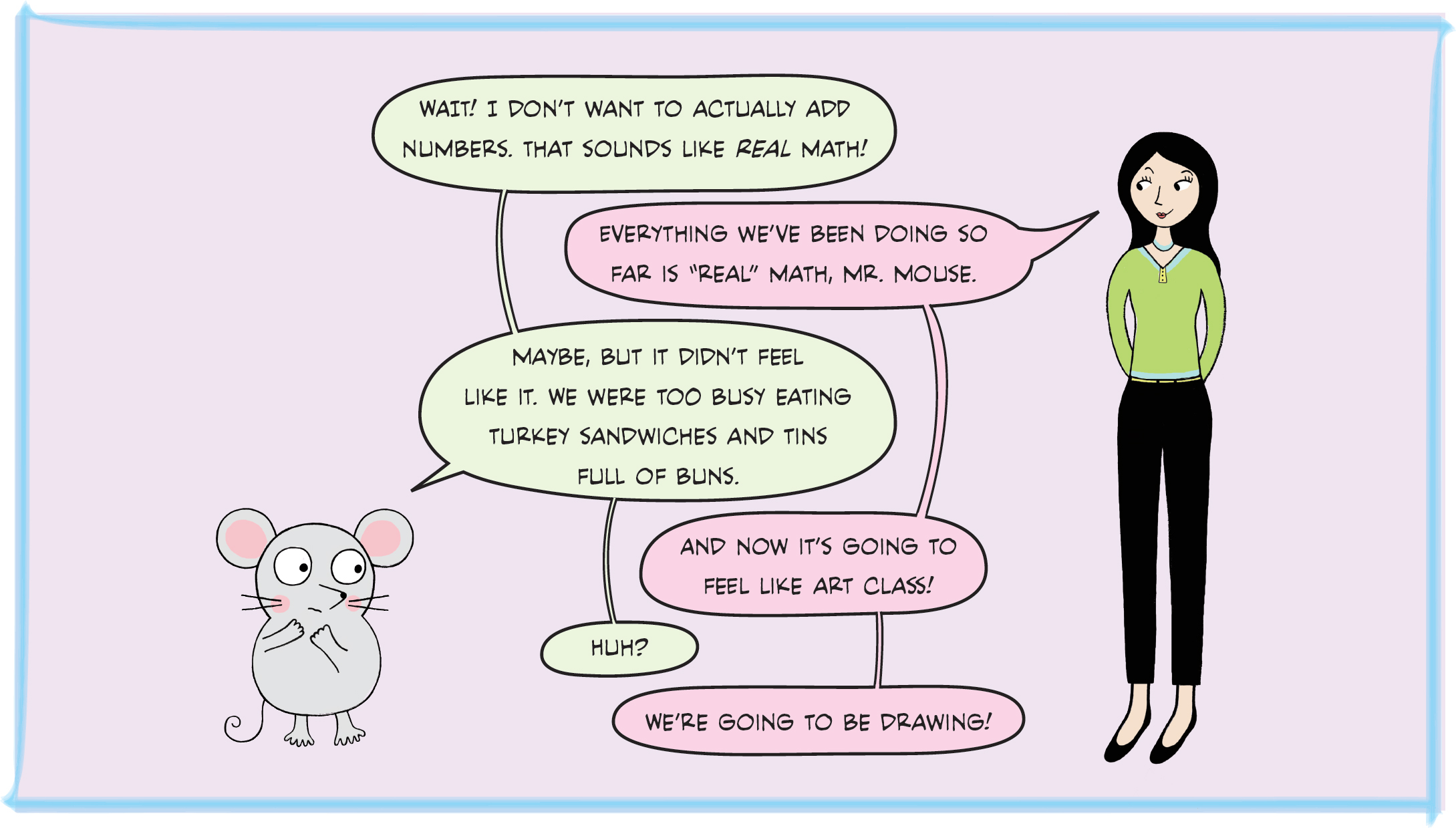

Do you know what a model is? It’s a person who puts on clothes and gets his or her picture taken to show everyone what the clothes look like on a person. When we are asked to “model” a number, that means to show what it looks like in pictures—in other words, draw a bunch of boxes like we saw in Chapter 4! So if we saw “Please model 243” in a math assignment, we could draw something like this (it’s okay to draw ten sticks like French fries!):

Just like before, the big squares stand for 100 each, the sticks stand for 10 each, and the baby squares stand for 1 each, so that’s 243. (To draw a hundred, just make a big square, and then draw 9 little lines down and 9 little lines across!) They might not look as neat and tidy as the ones we saw in Chapter 4, but they work the same way. And now we’re going to add with them!

Art Class: Using Models to Add Two-Digit Numbers
Let’s say Lin has 23 buns, and Larry has 51 buns. How many total buns is that?
First, let’s draw Lin’s 23 buns! Just for fun, we’ll color them in, too. We see a 2 in the tins place, so that’s 2 tins, and a 3 in the buns place, so that’s 3 extra buns:

And how could we draw Larry’s 51 buns? We see a 5 in the tins place, so that’s 5 tins, and a 1 in the buns place, so that’s 1 extra bun, right? We’ll draw this:

We want to know how many total buns we have, so let’s start by gathering the tins together. Lin had 2 blue tins, remember? And we can see Larry has 5 red tins. So that gives us 7 tins total, since 2 + 5 = 7, right?
ADDING THE TINS:

Lin had 3 extra buns and Larry had 1 extra bun—that’s easy! It’s just 3 + 1 = 4.
ADDING THE BUNS:

Looking at the purple stuff, we see a total of 7 tins and 4 buns, so that’s 74! Ta-da! And we just did 23 + 51 = 74. Nice work!


I’m sure you’ve noticed that in this book, sometimes we use “tins” and “buns” to replace “tens” and “ones” because it can make place value easier to understand…and Mr. Mouse really likes food. But they both work! I’ll do #1 on the next page using tens and ones, since that’s what you’ll see at school.